Is a fast-growing deciduous tree, one of three species of conifers. One of the oldest trees still existing from pre-tertiary times, growing to 40 – 45 m in height and 2 m in trunk. They can grow too large for normal gardens but are suitable for parks. Most people have heard of Giant Redwoods and probably know that they originate from somewhere in America. In fact, although relatively rare, they can be found in many towns in the British Isles. They are magnificent trees, not just for their phenomenal size but also for their shape, their sturdy buttress style and soft spongy bark. When you look up the trunk of a mature Giant Redwood and see the slim branches sweeping gracefully downwards, there is an air of pre-historic mystique about them; and yet by contrast there is a fresh modern appeal about the smart conical shape of a juvenile tree. The needles are sharp and firm and could cause injury to hands.
You will see Giant Redwood and Coast Redwood trees of varying ages, but in the main they will be around a hundred to a hundred and sixty years old. Very young by their own standard, since they live for thousands of years, but they were only discovered and introduced to England in the 1850's. There is now an increase in popularity and a small but growing number of very young examples have been planted over the last decade or so by adventurous organisations and councils in the UK.

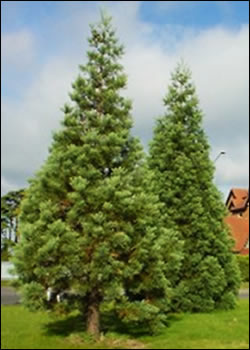
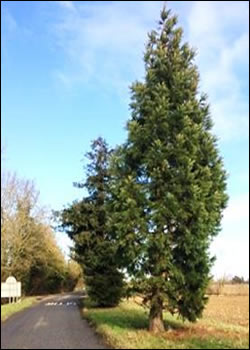
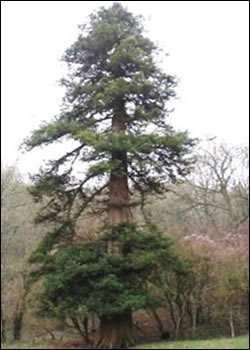
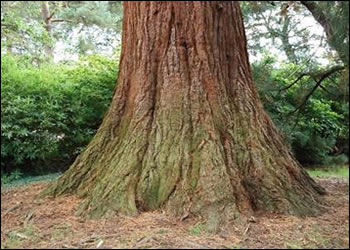
The Wellingtonia is the most massive of these species. In fact, they are recognised as being the most massive of all trees. Not quite the tallest and perhaps not necessarily the broadest, but certainly the heaviest. Although they were already known by the native inhabitants for many centuries, Europeans discovered them growing in the Sierra Nevada, their only known remaining habitat, in the early 1850's. They can live for more than three thousand years, and can reach a height of over 100 metres. The trunk of these trees is very stout, usually forming a single straight column, and with a marvellous tapering effect at the base.
The leaves are opposite, 1 – 3 cm long, and bright fresh green, turning red-brown in autumn. The pollen cones are 6 mm long, produced on long spikes in early spring; they are only produced on trees growing in regions with hot summers.
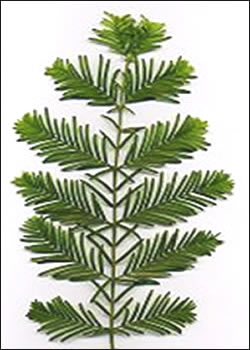
This bark can be fairly thick, well over two feet in the more mature examples. This gives the older trees a certain amount of protection from insects, but the main benefit is its’ fire retarding properties. Whereas a forest fire is pretty much a disaster for the majority of trees, it seems that the Giant Redwood will not just shrug off such an event, they actually need them in order to prosper. Moderate fires will clear the ground of debris and competing plant life, and the rising heat dries and opens the ripe cones, shortly afterwards releasing many thousands of seeds onto the well-prepared ground below. The crowns of the mature tree will, in a forest environment, be a long way from the ground, thus protecting the branches and foliage from destruction in the fire.
Ironically, man's intervention in this respect caused considerable damage in the early 20th century. Forest fires in the Redwood groves were often extinguished before they took hold, but over time this allowed too much flammable debris to build up so that in instances where the fire could not be controlled it became so intense that crown fires developed, with devastating results.
For such an immense and hardy tree, its seedlings are much less resilient than you would expect. They need just the right conditions, and are slow to develop for their first six months.
The foliage being very similar often leads to them being confused with:-
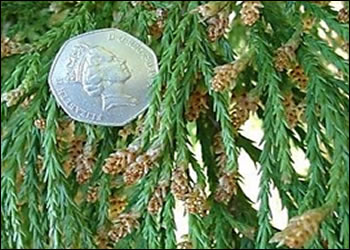
Redwood
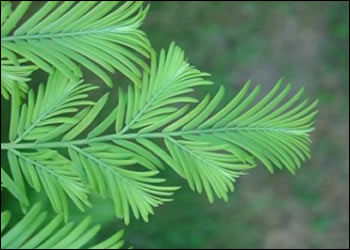
Redwood (close-up)
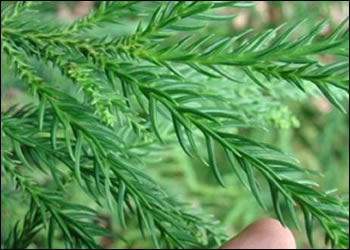
Cryptomeria
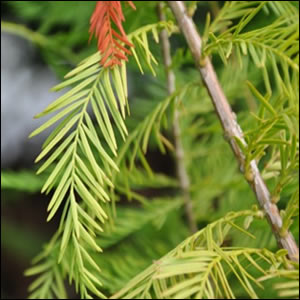
Swamp cypress
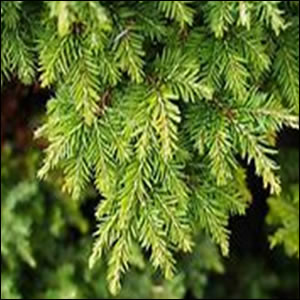
Western hemlock
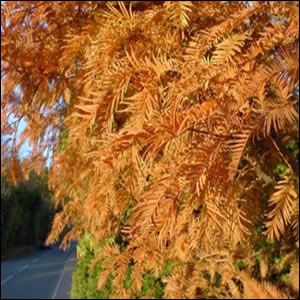
Redwood - autumn colour
A slightly unusual choice for a bonsai, it is a species that in its natural habitat can grow 4 metres in one year, so you have challenge to maintain its health as a bonsai. There are some but not many specimen bonsai to be found and most are in the hands of experienced bonsai growers, its not for the faint hearted. On the other hand small groups of very young sapling trees can be most attractive for a number of years but not for a lifetime, the whole character changes as they mature.
They like a sunny position, but they should be in semi-shade during the hottest weeks in summer. In winter Redwoods should be protected against frost
During the summer Redwoods need a lot of water and the soil should be kept moist. But overwatering can lead to root rot.
High nitrogen fertilizer should only be used in spring. During the summer fertilize more cautiously in order not to provoke uncontrollable growth.
Pruning and wiring:A formal upright shape is typical for the Redwood in nature and also when it is styled as a bonsai. Redwood bonsai produce a lot of new buds, especially near scars from pruning. All buds you don't need should be removed immediately. Twigs with long internodes should be pruned in spring before the new buds open. Branches can be wired but they are brittle.
Redwoods should be repotted every year. The strongly growing roots fill up the pot quickly and soon push the root-ball up in the pot. Considerable root pruning is necessary each time they are repotted.
When grown as bonsai they are often confused with Western hemlock which grows in a similar form.
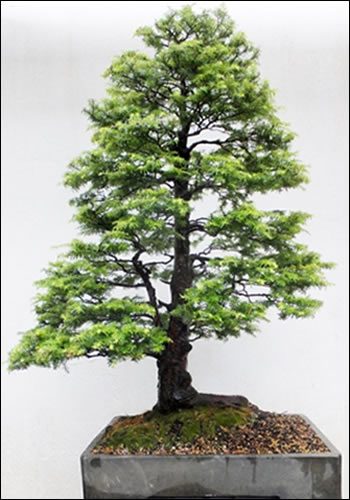
Redwood
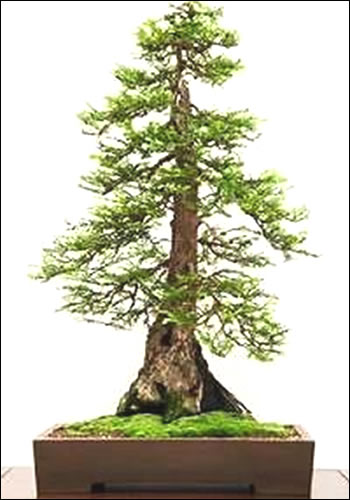
Western hemlock
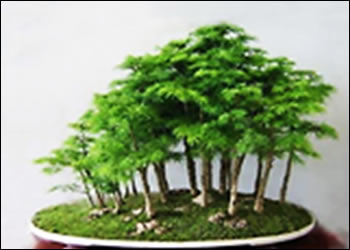
Redwood
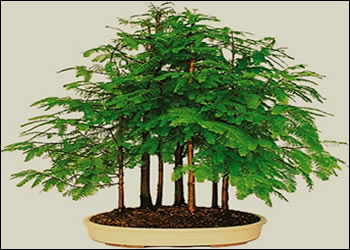
Western hemlock
Young trees and groups have a certain appeal
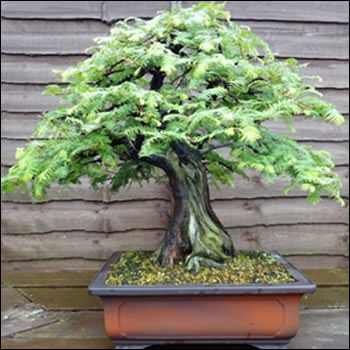
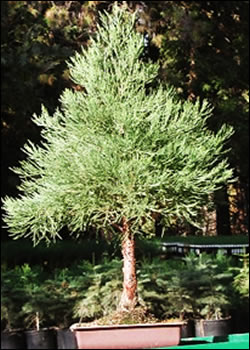
Web design: nysys